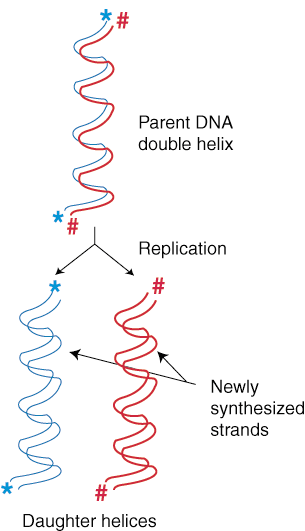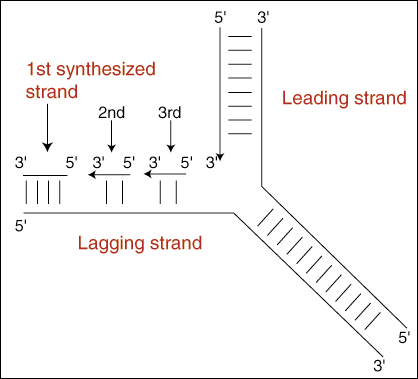Introduction
DNA replication is the biological process involved in the production of two identical replicas of DNA from an original DNA molecule. It is, therefore, the basis of biological inheritance and thus occurs in all living organisms on Earth.
During each cell division, two daughter cells are formed, which must contain the same genetic information as the parent cell by using the parental strands as the guide or template. This process is semi-conservative, whereby one parent strand is always passed on to the daughter helix.

DNA replication takes place in three major steps:
- Opening of the double helix and the separation of the deoxyribonucleic acid (DNA) strands.
- Priming of the template or guide strand.
- The assembly of the newly formed DNA segments.
Separation of DNA strands
DNA strands are usually spirally coiled therefore during the separation, the two strands of the double helix are uncoiled at a specific location referred to as the origin forming a Y shape which is known as a replication fork. From an internal location to the strand’s end, the replication fork moves down the parental DNA strand such that for every fork, there is a twin replication fork moving in the opposite direction from precisely the same internal location to the opposite end of the strand. The parental DNA helix is kept unwound by single-stranded proteins working in conjunction with the helicase. Through coating the unwound strands with rigid units of single-stranded proteins (SSB), the strands are kept from snapping back together in a helix. The coating is carefully done in a way as not to cover the bases, thus allowing the DNA to remain available for base pairing with the resulting new daughter strands.
Assembly of new daughter strands
The proteins and enzymes involved then work together in preparing the strands for duplication. DNA polymerase, a particular enzyme, is used to organize the assembly of the new resultant DNA strands. DNA replication is inflexible whereby the DNA polymerase only works in a 5′ to 3′ direction, as shown below.

Therefore, the daughter strands synthesize in different methods; one of the daughter strands adds nucleotides only in chunks while the other adds one by one in the direction of the replication fork. The daughter strand that adds nucleotides in chunks is called the lagging strand while the other that adds nucleotides one by one is called the leading strand.
The replication that involves one nucleotide being places right after one another in a series is called continuous replication, which is evident in the leading strand.
The lagging strand replicates in smaller segments known as Okazaki fragments, synthesized in the 5′ to 3′ direction away from the fork. DNA ligase stitches these fragments together creating a continuous strand is a type of replication called discontinuous.